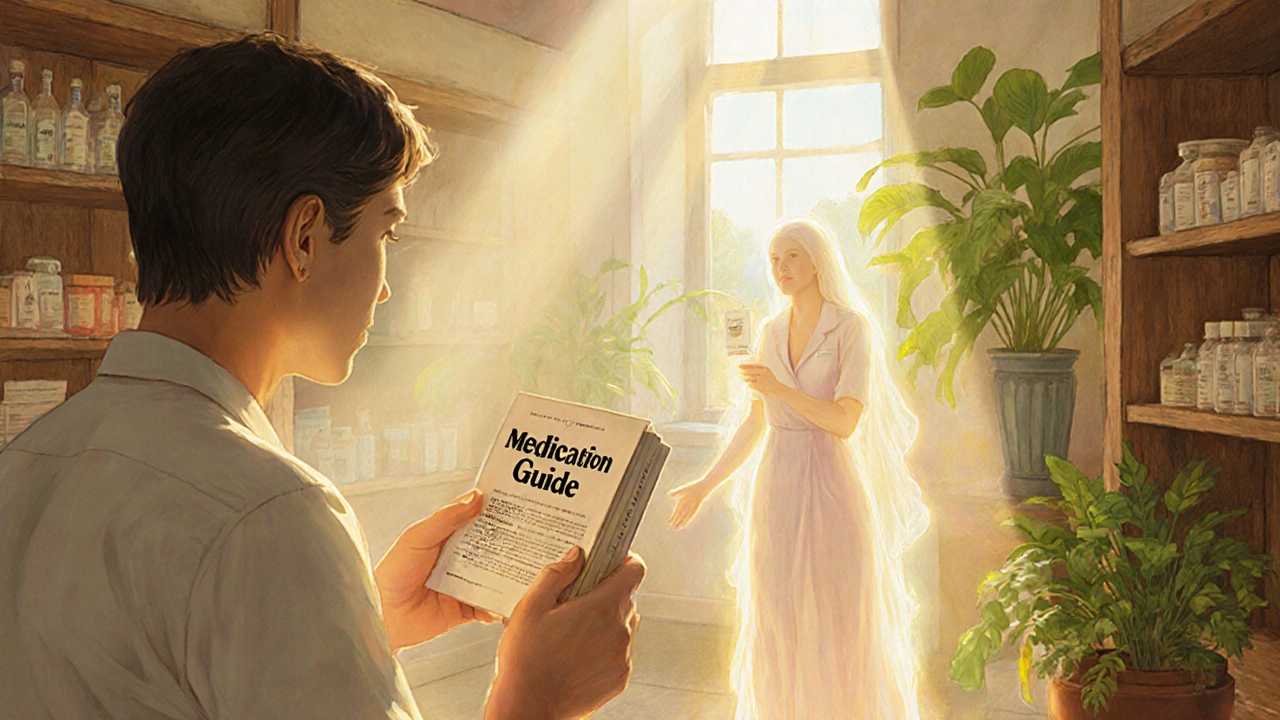Medication Guides: Trusted Advice on Drugs, Side Effects, and Treatment Choices
When you're taking a medication guide, a clear, practical resource that explains how to use a drug safely and what to watch for. Also known as drug information sheet, it's not just a leaflet tucked in the box—it’s your personal roadmap for avoiding danger, spotting problems early, and making smarter choices with your health. Whether you’re on blood thinners, antibiotics, insulin, or something for arthritis, a good medication guide tells you what to expect, what to fear, and what to do when things go sideways.
These guides don’t just list side effects—they connect the dots between your drug and your life. For example, anticoagulants, medications that prevent dangerous blood clots. Also known as blood thinners, they include DOACs like apixaban and older options like warfarin. But here’s the thing: one isn’t better for everyone. Warfarin needs regular blood tests. DOACs don’t—but they cost more. And if you have a mechanical heart valve? Warfarin is still the only choice. Then there’s antibiotic alternatives, other drugs you can use when one doesn’t work or causes trouble. Also known as antibiotic switches, they include Bactrim vs. amoxicillin, Ceftin vs. azithromycin, or clarithromycin vs. doxycycline. Each has a sweet spot: who it helps, who it hurts, and when you should avoid it altogether.
And it’s not just about picking the right drug—it’s about managing what comes after. insulin therapy, a treatment for diabetes that requires careful timing and diet. Also known as injectable glucose control, it can cause low blood sugar or weight gain if not handled right. A real medication guide doesn’t just say "watch for hypoglycemia"—it shows you how to recognize the shake, the sweat, the confusion before it turns into an emergency. Same with drug side effects, unwanted reactions that can range from annoying to life-threatening. Also known as medication risks, they’re not random—they’re predictable if you know what to look for. Severe bleeding from blood thinners? It doesn’t always scream. Sometimes it’s just a bruise that won’t fade, or gums that bleed for no reason. A good guide tells you when to call 911 and when to just wait it out.
These medication guides cover real people, real situations. Managing raltegravir while traveling across time zones. Choosing between Arava and methotrexate for rheumatoid arthritis. Figuring out if baclofen can calm the involuntary movements of tardive dyskinesia. Deciding if fluoxetine is better than sertraline for your mood. They don’t just compare drugs—they compare your life before and after the prescription.
What you’ll find below isn’t a list of random articles. It’s a curated collection of honest, no-BS comparisons and survival tips drawn straight from the experiences of people taking these drugs every day. No marketing fluff. No vague advice. Just clear, practical, tested guidance on what works, what doesn’t, and how to stay safe while doing it.

Medication Guides vs Package Inserts: Where to Find Side Effect Details
Learn where to find accurate side effect information for your prescription drugs-Medication Guides for serious risks, Package Inserts for full details. Know the difference and how to access both.